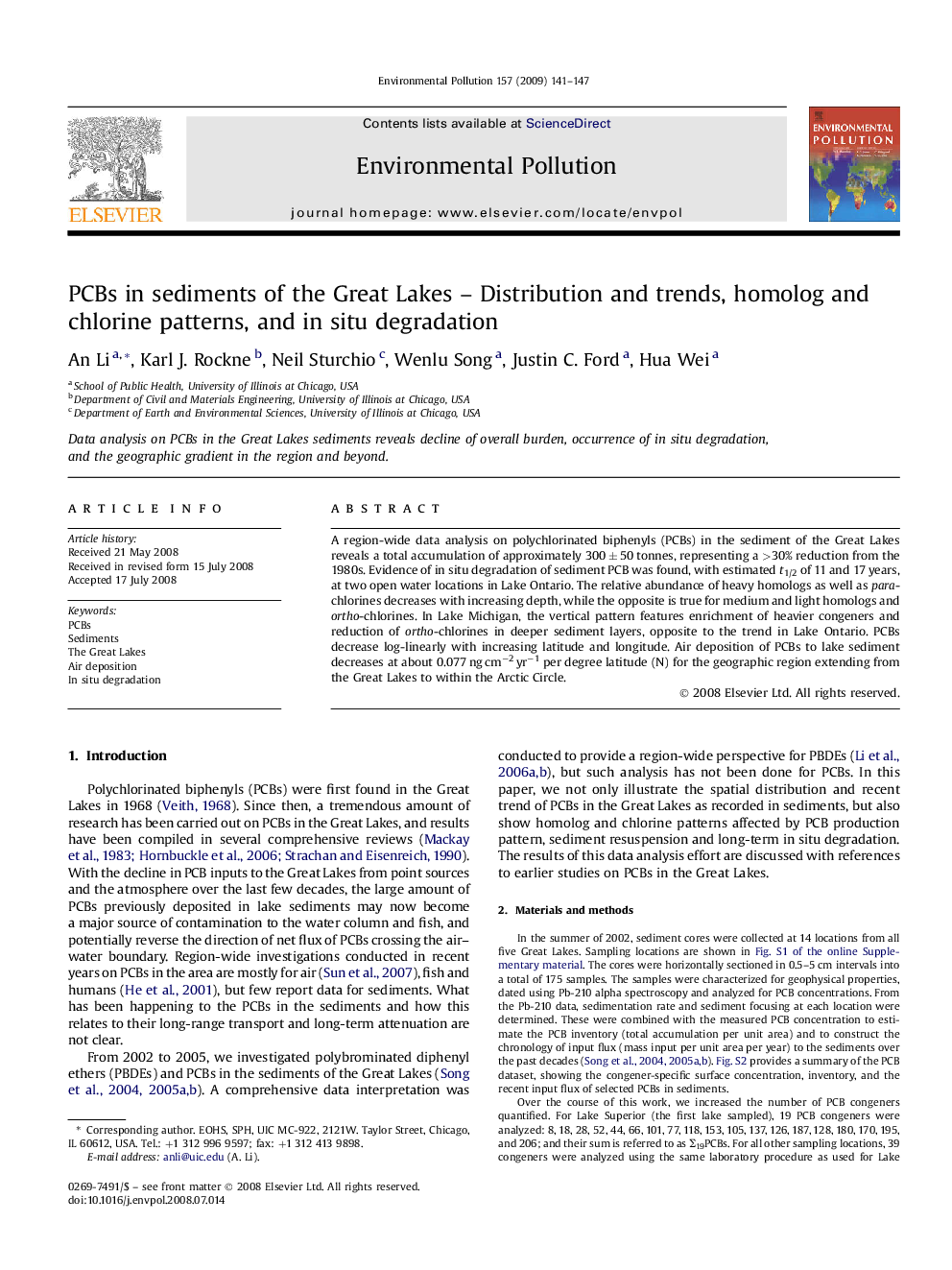| Article ID | Journal | Published Year | Pages | File Type |
|---|---|---|---|---|
| 4425970 | Environmental Pollution | 2009 | 7 Pages |
A region-wide data analysis on polychlorinated biphenyls (PCBs) in the sediment of the Great Lakes reveals a total accumulation of approximately 300 ± 50 tonnes, representing a >30% reduction from the 1980s. Evidence of in situ degradation of sediment PCB was found, with estimated t1/2 of 11 and 17 years, at two open water locations in Lake Ontario. The relative abundance of heavy homologs as well as para-chlorines decreases with increasing depth, while the opposite is true for medium and light homologs and ortho-chlorines. In Lake Michigan, the vertical pattern features enrichment of heavier congeners and reduction of ortho-chlorines in deeper sediment layers, opposite to the trend in Lake Ontario. PCBs decrease log-linearly with increasing latitude and longitude. Air deposition of PCBs to lake sediment decreases at about 0.077 ng cm−2 yr−1 per degree latitude (N) for the geographic region extending from the Great Lakes to within the Arctic Circle.
